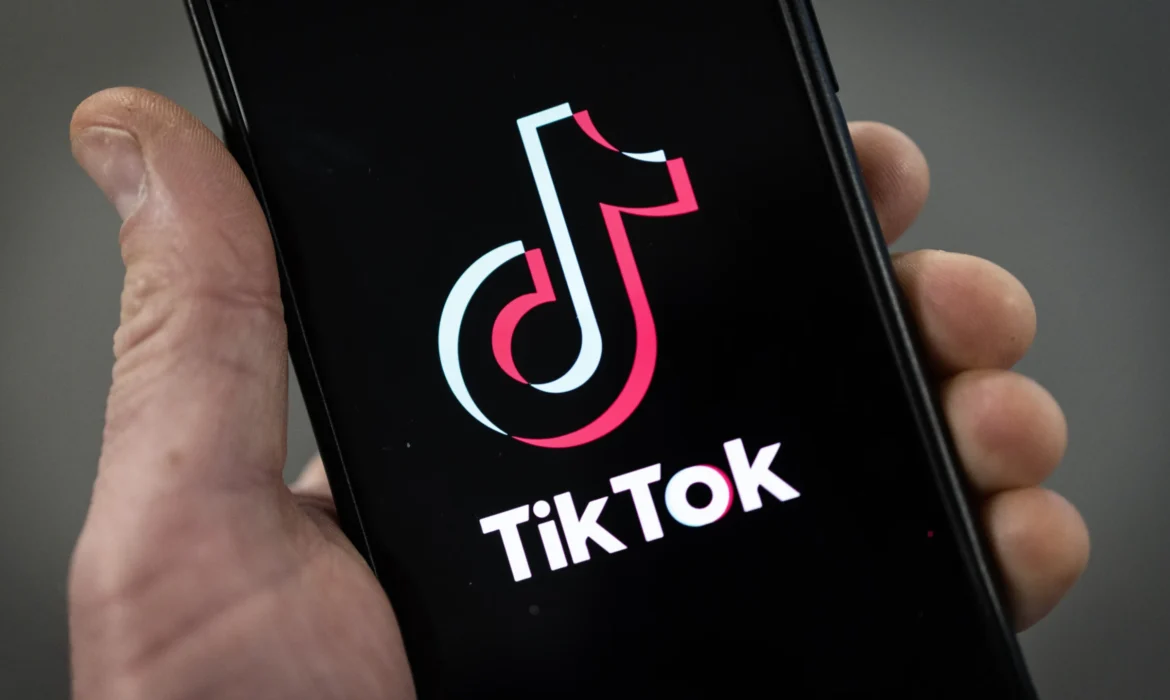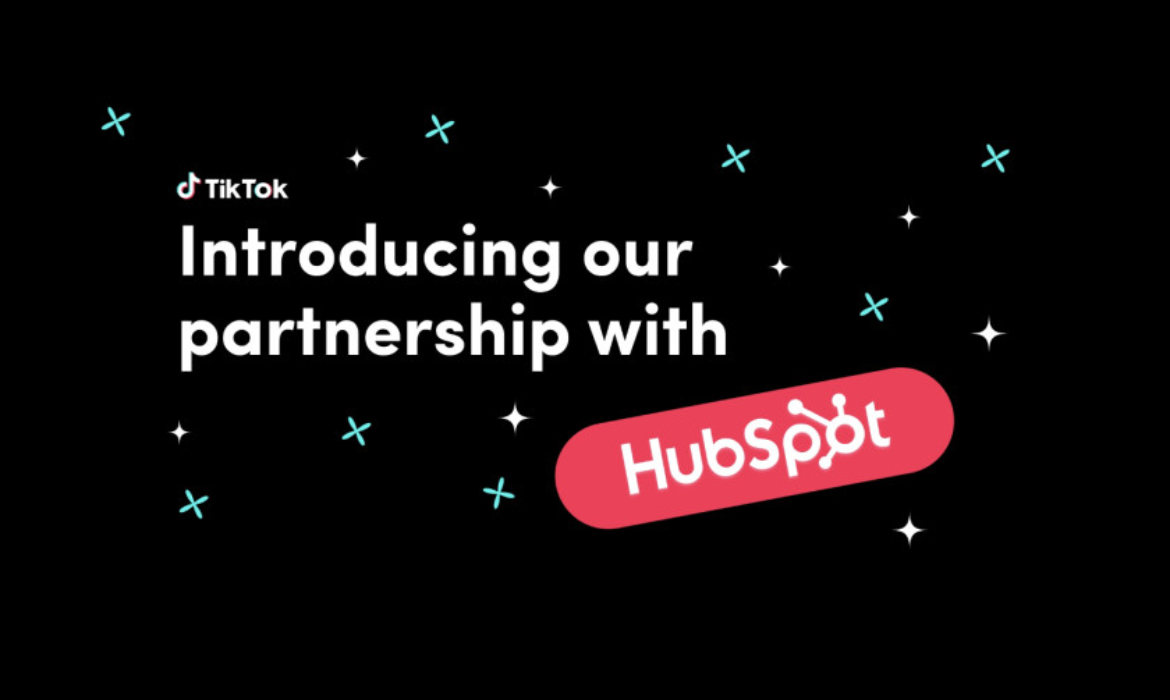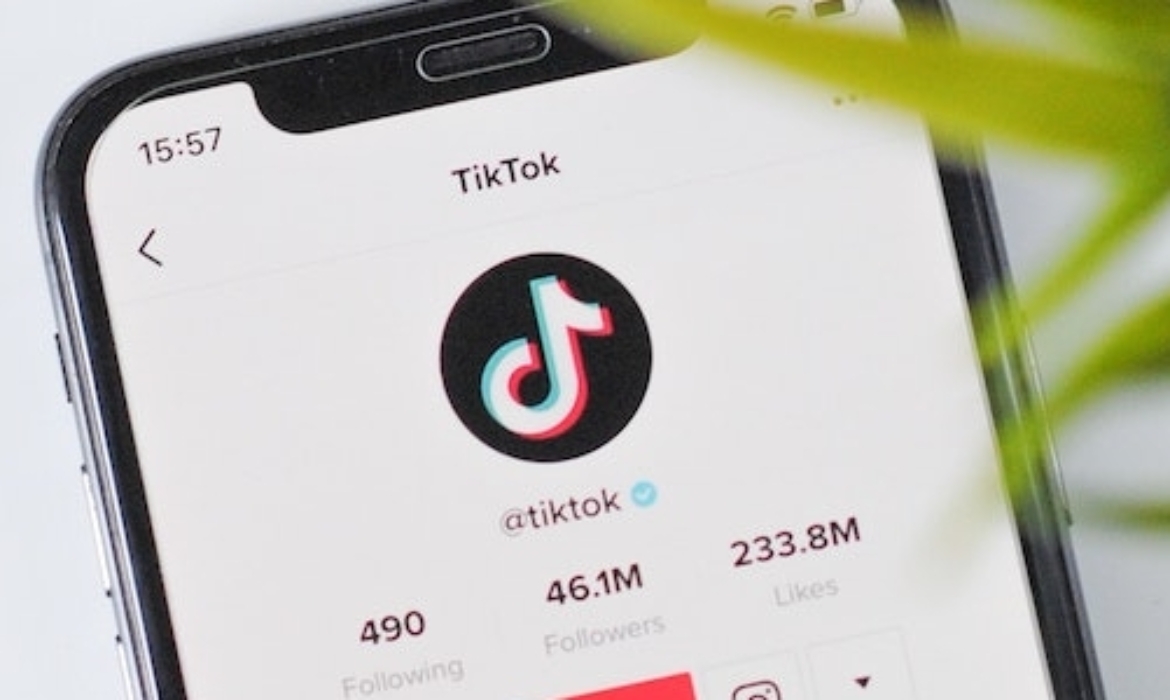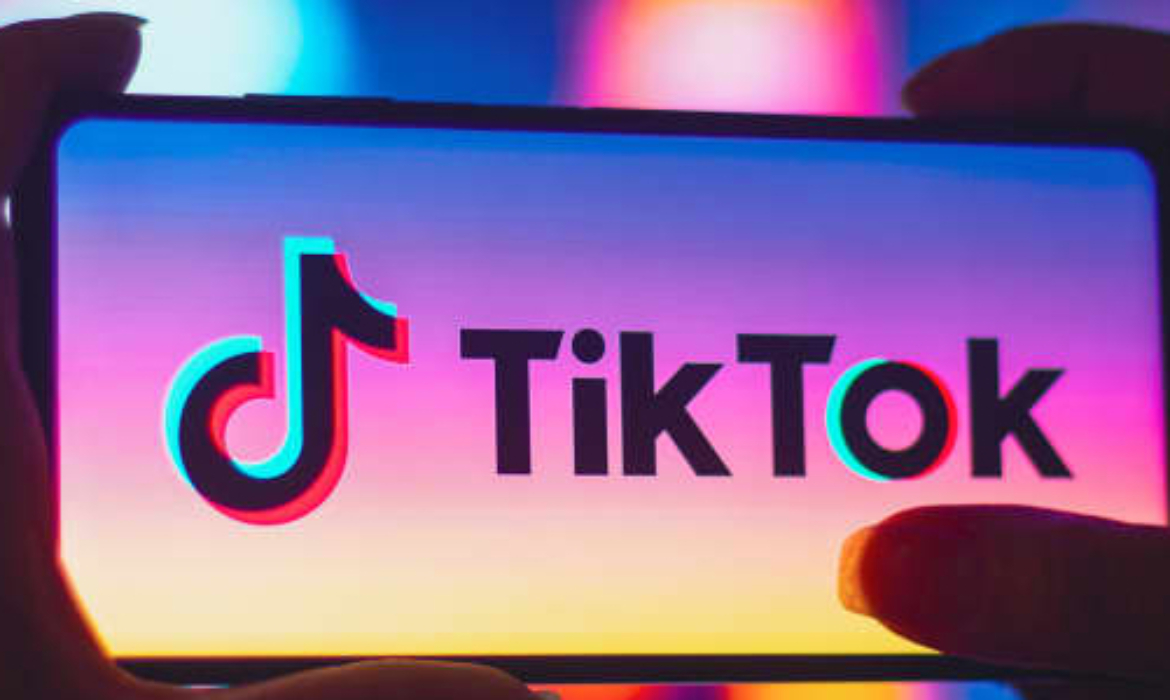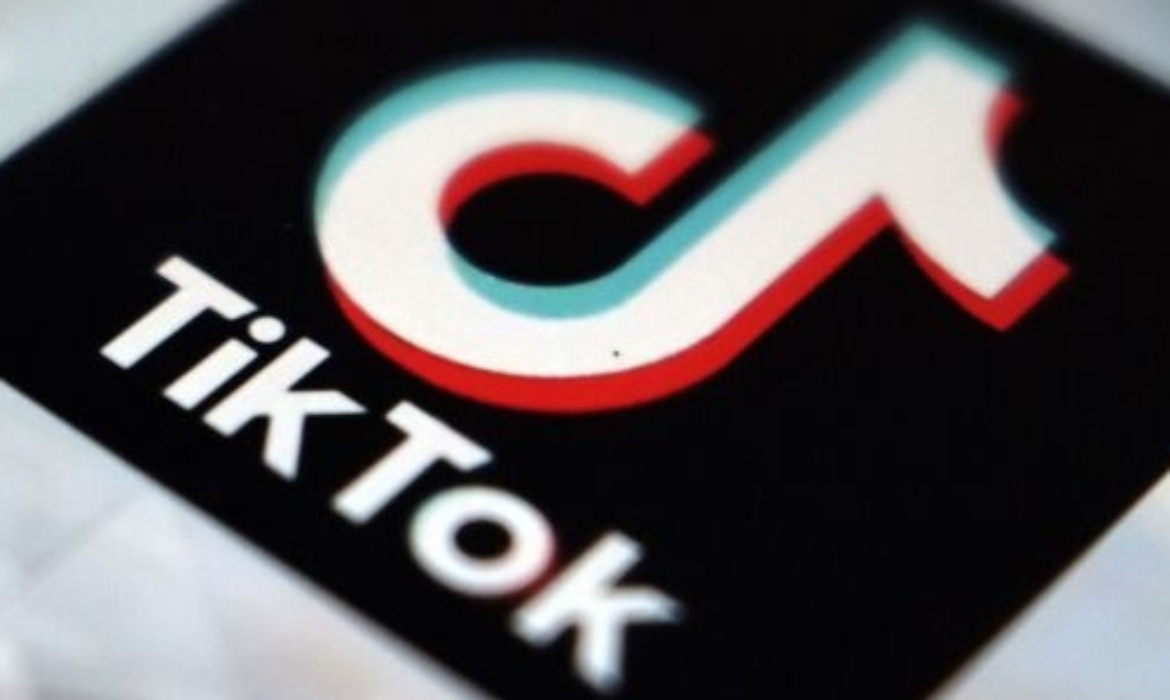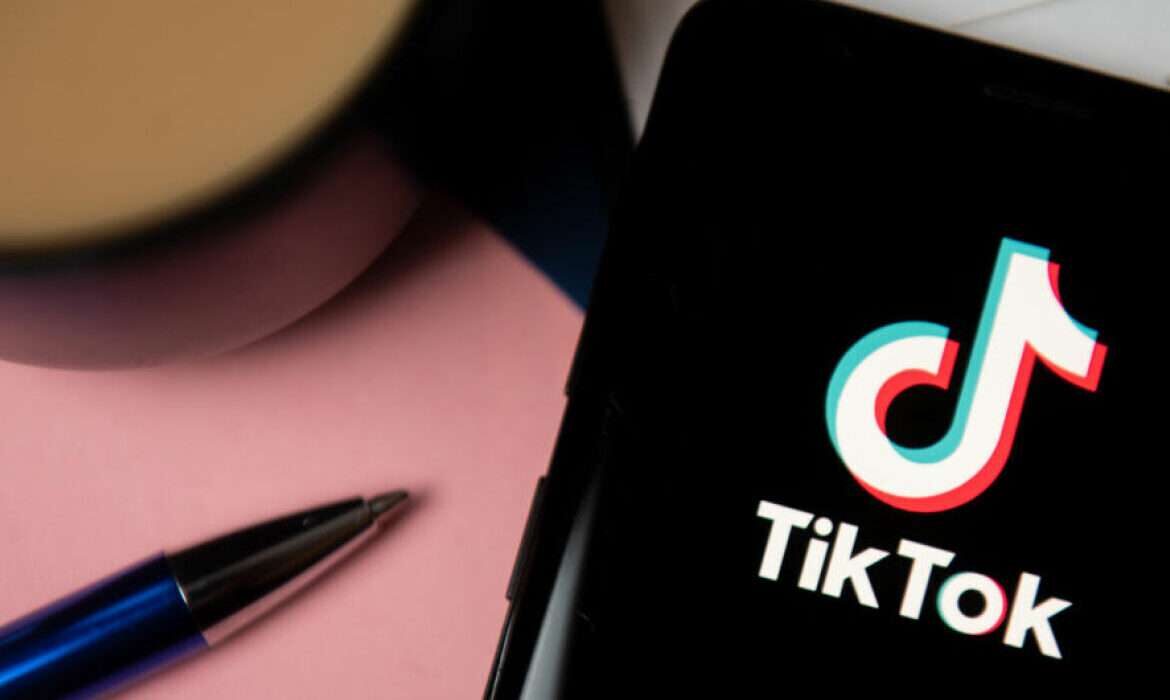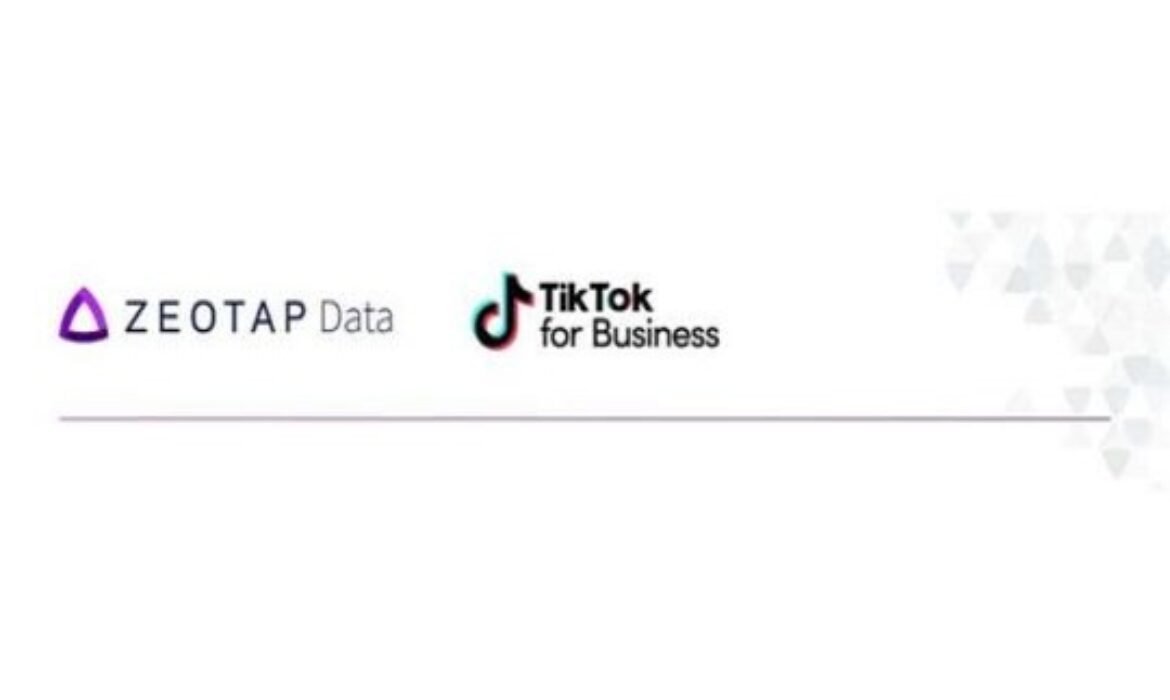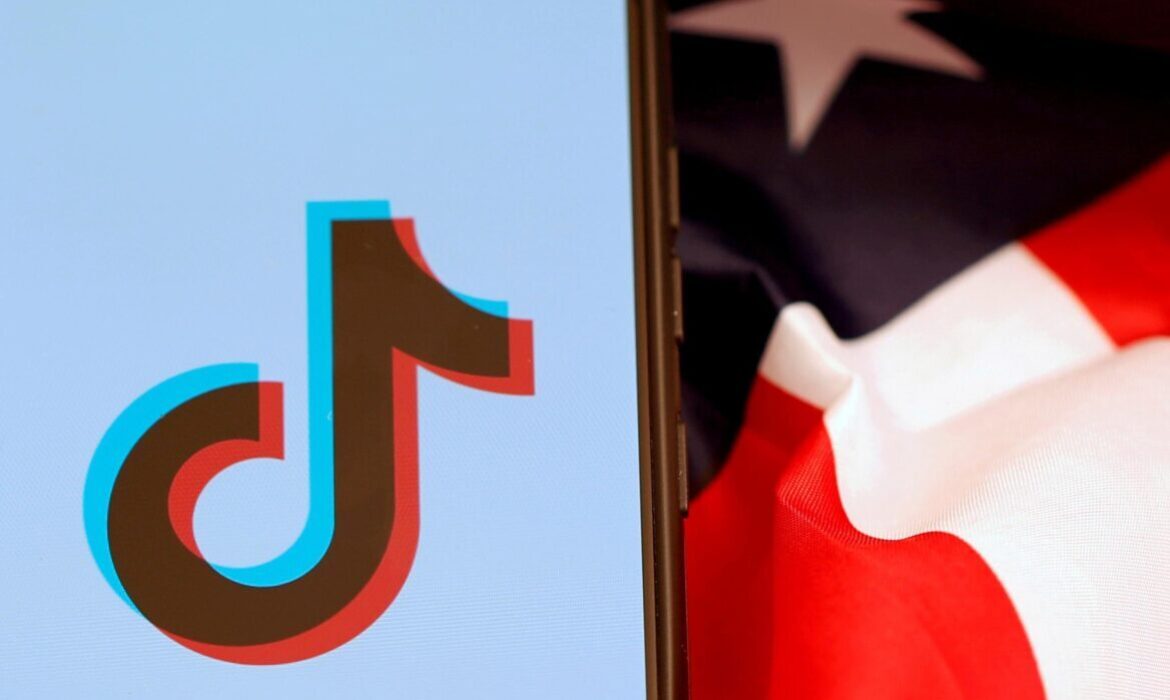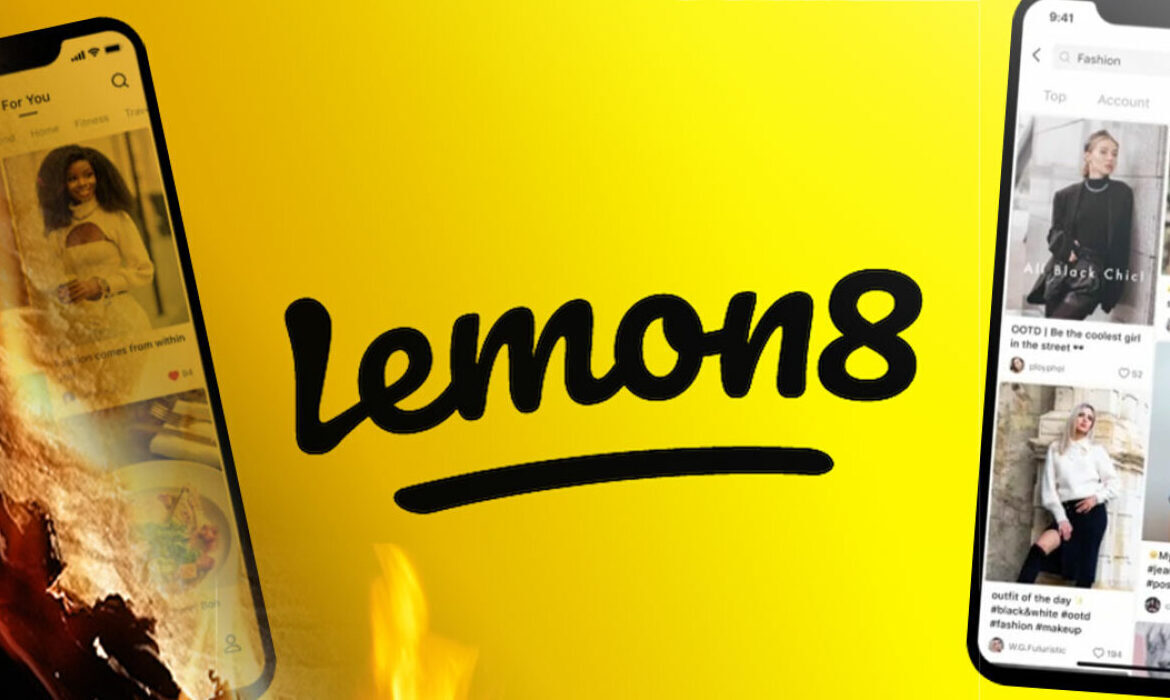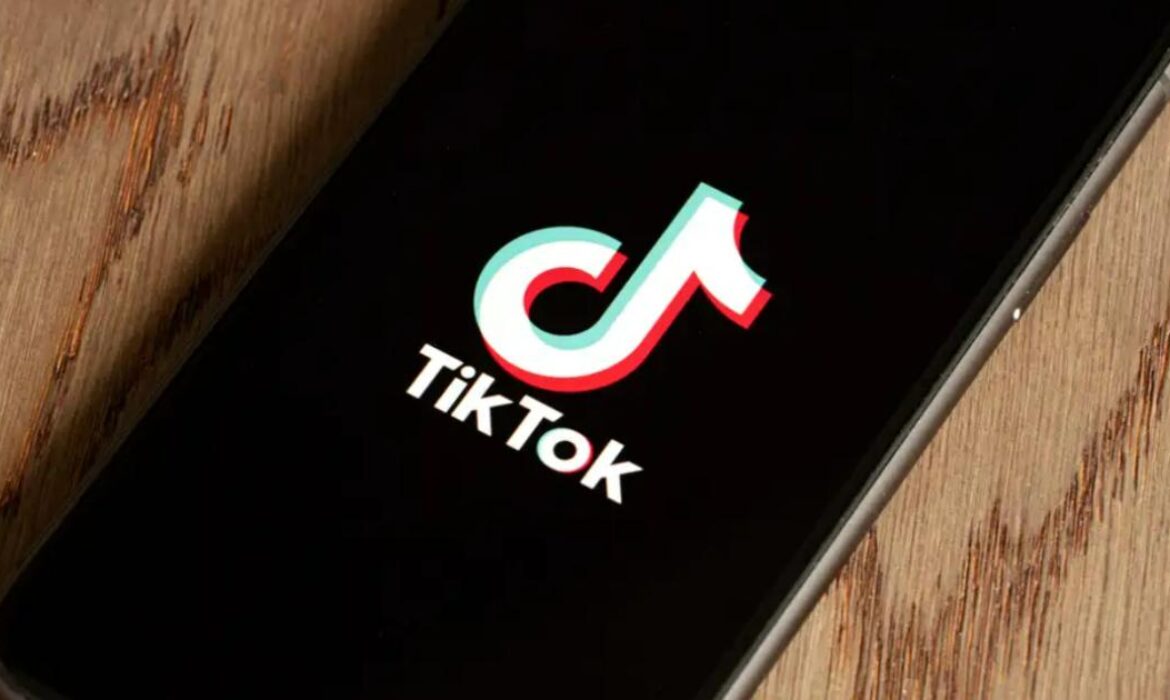TikTok Testing New Feature To Make All Video Posts Shoppable
TikTok has begun testing a feature that will make all video posts shoppable, the latest step in the social media company’s efforts to build a multibillion-dollar e-commerce business in the United States. With this new feature, objects in a video can be automatically identified by technology. After that, it prompts users to click on a product page on the TikTok Shop to find comparable items. Before, products could only be tagged by brands and approved influencers in content uploaded to the app. The company introduced a TikTok shop in the US last year in an attempt to merge product discovery with shopping.
TikTok Shop launched in the U.S.
To bring together the convenience of Amazon.com Inc. shopping with the product discovery capabilities of social media platforms like Instagram, the Chinese social media company launched the American version of TikTok Shop last year. The company, which hopes to sell $17.5 billion worth of goods in the United States this year, has made this new project a top priority. But reviews of Shop’s debut have been conflicting thus far.
Read More: Amazon Ads and IPG Mediabrands Ink 3-year Deal for Upcoming Prime Video Ads
TikTok’s aim to make video posts shoppable
After witnessing record-breaking sales, merchants praised and cheered the app, with TikTok financing discounts and free shipping. Users, however, have taken issue with products that are sold on TikTok’s marketplace that are knockoffs and counterfeit. Some claim the experience is being ruined by the abundance of influencer posts that resemble advertisements.
Over 5 million new customers made purchases back in November. On the other hand, consumers have been grumbling about knockoffs and counterfeit goods being offered for sale. Some claim that the experience is being destroyed by ad-like posts. The company incentivizes creators to promote merchandise by paying them commissions on product purchases made from their posts.
TikTok’s Strategy
To address these issues, a new feature that is currently undergoing testing links products to posts made by regular users without making a strong sales pitch. This strategy aims to give guests who are primarily looking for entertainment a more pleasurable experience. Even though the new feature is still undergoing testing, it has already demonstrated improvement potential.
Read More: TikTok and HubSpot Partner for CRM Integration to Boost Lead Generation
TikTok and HubSpot Partner for CRM Integration to Boost Lead Generation
HubSpot and TikTok are teaming together to make community-based customer acquisition for brands easier than ever in a move that has the potential to completely redefine B2B lead generation. Brands will benefit from the integration as TikTok leads get integrated into HubSpot’s Smart CRM system. The first CRM partnership for TikTok lead generation will help businesses grow like never before by combining the power of the top customer platform and the most popular short-form mobile video destination.
HubSpot – TikTok CRM integration
The goal of the integration is to make it easier to import leads straight from TikTok into HubSpot Smart CRM. This action is a reaction to SMBs’ rising customer acquisition expenses. According to HubSpot’s research from 2021 to 2022, these costs increased for 53% of SMBs in the US, with more than a third reporting an increase of 20% or more. As a result, the collaboration is timely given that consumers are using their communities to learn about brands and products. Additionally, SMBs are looking for fresh approaches to obtaining leads due to obstacles in acquiring new customers.
Uncovering new opportunities
With a highly engaged audience, TikTok is well-positioned to assist B2B businesses in overcoming this challenge. More than 50% of American TikTok users claim to have discovered new brands on the app. Also, 58% of users worldwide state that after seeing a lead generation advertisement, they are likely to make a purchase. Through the use of native HubSpot integration, SMBs can automate the TikTok lead-capturing process and realize the benefits of community-based acquisition
The integration automates the B2B Lead Capture Process. Here’s how it works
The automated lead capture from TikTok made possible by the new HubSpot CRM integration transforms a highly engaged audience into prospective high-value clients. HubSpot’s Smart CRM is the central component of this integration. With the use of analytics and intelligence workflows, it guarantees a consistent customer experience across teams and provides useful insights. To further streamline the initial setup, users can link their TikTok for Business account to HubSpot.
Read More: Launch Cart Debuts AI-Powered Ad Platform LaunchADS.AI
After connecting, advertisers can use TikTok to create lead-generation ads that instantly sync leads into HubSpot’s Smart CRM in real time. Because all prospects are centralized, managing a company’s sales funnel is made simpler for enterprises. From there, companies can use HubSpot’s Marketing Hub to interact with new leads and use AI-powered analytics to identify which campaigns produce the best results. Currently, only the U.S. and Canada have access to HubSpot CRM integration with TikTok. However, in the upcoming months, it is planned to be expanded to more nations.
TikTok’s High Engaging Audience meets HubSpot’s Robust CRM
The collaboration has substantial effects on B2B marketers who are struggling with growing client acquisition costs. It represents the coming together of HubSpot’s powerful CRM skills with a very engaged TikTok audience. Additionally, it provides fresh approaches to lead generation that correspond with the current trends in community-based client acquisition.
No-Code Integration
HubSpot is promoting a no-code integration that enables companies to:
- Connect their HubSpot account to their TikTok for Business account
- Start creating lead-generating ads on TikTok and sync leads with HubSpot’s Smart CRM.
- Employ HubSpot’s Marketing Hub to create tailored campaigns for a range of media, including SMS, sponsored ads, and email.
- Use the new Sales Hub to manage and interact with qualified prospects.
- Utilize HubSpot’s AI-powered reporting capabilities to evaluate campaign outcomes and adjust tactics.
Here’s what they said
Karen Ng, SVP of Product at HubSpot said,
We’re always looking for ways to help our customers grow better, and it’s undeniable that TikTok is a massive opportunity for businesses. With this integration, we’re pairing the discoverability of TikTok with the power of HubSpot’s customer platform to help more businesses turn tuned-in audiences into high-value customers.
Read More: TikTok’s Double Delight: Creative Assistant and Ad-Free Subscription
TikTok’s Double Delight: Creative Assistant and Ad-Free Subscription
TikTok has unveiled two new updates – Creative Assistant and an ad-free subscription tier.
TikTok Creative Assistant
The new Creative Assistant virtual helper, powered by AI, is intended to support entrepreneurs and artists. Utilizing the platform’s vast archive of creative knowledge, the tool hopes to make it easier for companies and creators to collaborate. Similar to the present AI chatbots that provide information after being promoted, the TikTok Creative Assistant provides information. It is available to all TikTok Business users and is housed in the platform’s Creative Center. Additionally, it may analyze data, provide recommendations, spark ideas, and offer assistance with the platform’s best practices.
What is a Creative Assistant?
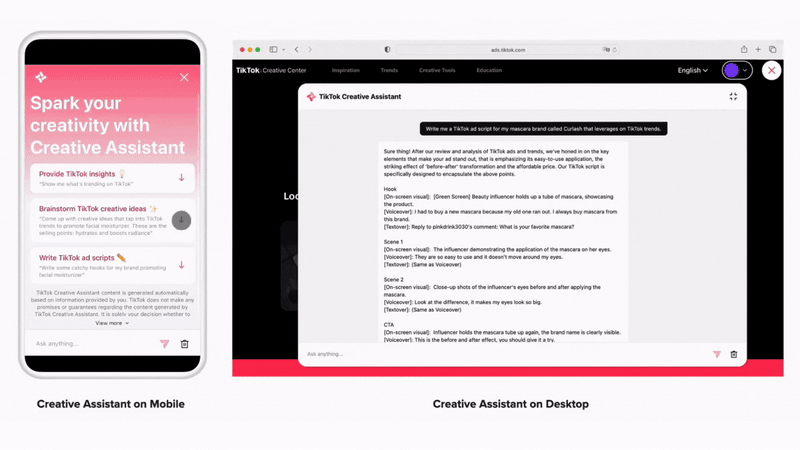
Image credit- Michael Fee- LinkedIn
TikTok Creative Assistant is a state-of-the-art AI-powered virtual assistant that marketers can communicate with and collaborate with as they produce advertisements or videos for the site. It guarantees to assist marketers in creating interesting and useful content for their TikTok campaigns. Users of TikTok Business can tap the icon in the top right corner of the screen to access the TikTok Creative Center tool interface. It might be worthwhile to look at what kinds of information are accessible to aid in improving the TikTok marketing process. It serves as a support system for TikTok video creators.
The tool aims to speed up the brainstorming process so users may use the platform more effectively to expand and explore their creative boundaries. Additionally, it incorporates numerous TikTok-specific creative insights that are meant to provide users with helpful tips and pointers as they experiment with creating advertisements or video content for TikTok. It is a sophisticated fusion of artistic intuition and artificial intelligence technology designed to help users get the most out of their TikTok presence through never-ending ideas.
Read More: TikTok Expands Measurement Suite with First-Party Solutions
Simplifying ad creation
It can be difficult to make an advertisement that grabs the audience’s attention and connects with them. This is especially true for newly established advertisers. Their procedure will be made simpler with the Creative Assistant. With the help of this new tool, advertisers will get advice and ideas on how to improve advertisements’ effectiveness and engagement. It will be similar to a personal advisor who can offer advice on how to make an advertisement more visually appealing and engaging. Based on the information, the program offers a variety of templates and suggestions. It will make the process of creating advertisements less tedious and more entertaining. To increase the overall appeal of the advertisement, it takes into account the characteristics of the content and makes targeted recommendations.
What’s in it for advertisers?
The brand-new Creative Assistant functions as the company’s current Creative Center options’ concierge. The app includes every feature of the Creative Center. So while it isn’t entirely new, it is going to make it simpler for marketers to access the necessary sections and components, along with in-stream suggestions and campaign scripts. The Creative Assistant isn’t supposed to take the place of creative input from companies and creators, TikTok cautions. Instead, it acts as a springboard for inspiration, working as a partner in the production of content. The resources offered by the AI tool can be used, edited, discarded, or redone at the user’s discretion.
Read More: Zeotap Data Joins TikTok to Enhance Targeting And Boost Ad Campaign
How does it work?
Through showcasing and analyzing top-performing commercials using data sources on the Creative Center, the TikTok Creative Assistant can assist users in their research into the creative landscape of the platform. The virtual assistant can assist with TikTok idea generation and script revision. Along with ad scripts, it will also display the best-performing commercials in a particular niche. Although each of these options has long been present in TikTok’s Creative Center, this will only make locating them easier. The company thinks that the foundation of its platform is storytelling and creativity. With the help of this new tool, businesses and content producers can make better and more interesting content.
What to use Creative Assistant for?
Within the platform’s Creative Center, TikTok Creative Assistant may be used to increase advertisers’ creativity by providing insights and recommendations for an easier content development process. For instance
- Creative Assistant helps TikTok novices get started on the site by offering advice on best practices.
- Using data sources from the Creative Center, Creative Assistant can present and analyze inspiring and top-performing commercials when investigating the TikTok creative environment.
- When writer’s block strikes, Creative Assistant is available to help with collaborative brainstorming, writing assistance, and rewriting of TikTok scripts.
Features for advertisers
Both new brands on TikTok and seasoned ones can benefit from the tools that the TikTok Creative Assistant has to offer. To help new creators get started and traverse TikTok‘s best practices, it offers advice. It also highlights and evaluates the best advertisements, assisting brands in their research stages. The freshly released Creative Assistant is designed to help with the creative aspects of content and advertising campaigns, but it has also lately included more data-focused options to support the technical aspects.
Read More: Amazon Prime Video to Introduce Limited Ads in 2024
Here’s what they said
As reported by Social Media Today, TikTok wrote in its blog post,
The latest evolution of creativity and productivity has led us to new paths of innovation. We’ve been working on a model that allows you to converse and collaborate when creating for TikTok. It draws information from a wealth of TikTok-focused creative knowledge, providing you with the most relevant responses for when you’re creating ads or videos for TikTok.
Ad-free Subscription Tier
In a subsequent update, TikTok is looking at new revenue streams. A small-scale trial of a monthly subscription service with no adverts has begun on the well-known video app. In one unnamed English-speaking region outside of the US, TikTok has started testing a subscription tier without ads for customers.
Insights on the ad-free tier
Reportedly, a new ad-free subscription tier was visible in the code of a new TikTok app version. During this testing period, it costs $4.99 per month in the USA. The popular social networking platform will be accessible to eligible subscribers without being interrupted by TikTok’s commercials. The business acknowledged starting a small-scale test of an ad-free membership plan in one region, but that market is outside of the United States. Value Added Tax (or “VAT”) is shown in the code, which means “Price Includes.” However, there is no VAT on products or services in the United States.
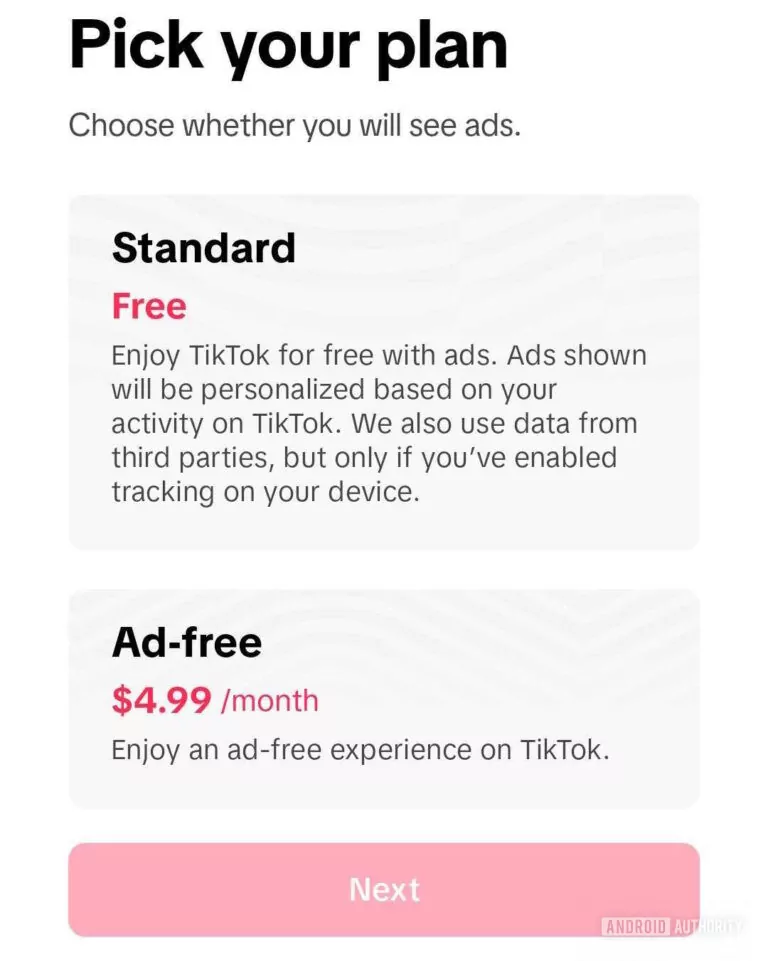
Image credit- Android Authority
Read More: TikTok Prioritize User Rights with Revised DSA Standards in the EU
The code
The strings included in the actual lines of code that Android Authority spotted read
We are testing the Ad-free plan with the TikTok community.
By continuing, you agree to the {%s} and acknowledge that you have read our {%s} to learn how we collect, use and share data.
You also accept the immediate provision of the Ad-free subscription. Price includes VAT.
Allow us to use your data to show you relevant ads, which helps keep TikTok free. %s.
You can also see how we use and protect your data in our %sWhat does it say about marketing on the platform?
Paying customers may avoid advertisements on the testing tier. The platform will not, however, stop influencer-led marketing initiatives that conceal their brand connections. The majority of advertisements that users encounter on the feed for short videos are of this type. Despite its limitations, the test represents the first time TikTok has ever taken payment in exchange for an ad-free user experience. The TikTok subscription option is currently only being tested in one market. The business can decide against expanding the offering.
Social media platforms are embracing an ad-free model
Other well-known social media platforms have already made preparations to follow suit. Like Meta, which may employ a paid subscription model to permit users residing in the European Union to avoid viewing advertisements on Instagram and Facebook to reduce regulatory scrutiny over privacy concerns around ad-tracking data. Along with YouTube, X garnered attention for its ad-free tier. Both services provide premium choices with extra perks like access to in-app monetization and offline downloading.
Read More: Meta to Offer Ad-Free Subscription Plans For European Users
TikTok Expands Measurement Suite with First-Party Solutions
TikTok has introduced Attribution Analytics, a first-party measuring tool made to assist marketing teams in comprehending the financial effects of the social network’s advertising solutions. Creating internet sensations is what the short-form content app is known for. The ByteDance-owned company is currently working to give advertisers more tangible tools to evaluate the impact of their campaigns on consumer spending. Other activities outside of the ingrained sorts of click-based measurement will also follow. Customers mostly see content that inspires them thanks to the TikTok feed’s immersive nature. However, it is possible that they might not act on that inspiration until much later. As a consequence, 79% of conversions that users attributed to TikTok were absent from conventional last-click attribution models.
TikTok’s New Measurement Capabilities.
According to TikTok, the majority of talks that could be attributed to in-app exposure aren’t recorded. This is a result of the way users use the app: browsing during a live session, then browsing and purchasing later. TikTok is promoting a first-party Attribution Analytics and Performance Comparison Tool to close these gaps. With these tools, advertisers will be able to
- “Visualize conversions across different time windows” in order to employ the attribution techniques that will benefit their company the most.
- Determine how effective TikTok is at generating conversions based on views so they can provide the best possible ad content for the platform.
- Discover detailed user activity information so that advertisers may move beyond click attribution
TikTok recently unveiled a number of new measuring features aimed at assisting advertisers in better determining if their campaigns lead to conversions. Furthermore, Attribution Analytics, a first-party solution, is integrated into the app’s Ad Manager. The tool’s purpose is to make the non-linear path to purchase more understandable. This will cover the customer journey’s awareness, exploration, and action phases.
Read More: TikTok Prioritize User Rights with Revised DSA Standards in the EU
What is the Performance Comparison Tool?
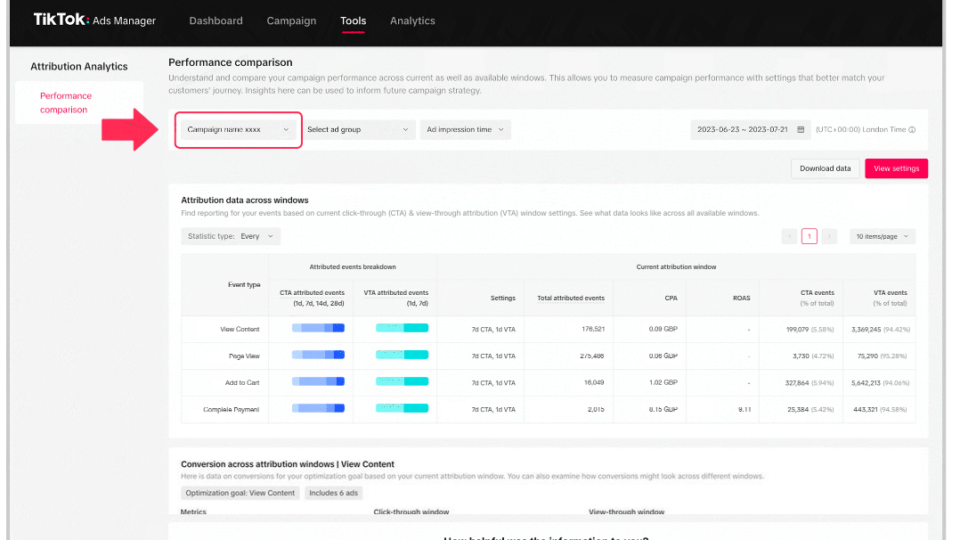
Image credit- Retail Touch Points
Marketers can monitor a variety of additional activities their ads take on thanks to performance comparison. It is a tool that lets marketers evaluate side-by-side comparisons of conversions during various attribution windows. Along with straight conversion information, it will also feature View Content, Add to Cart, and Initiate Checkout. In addition, it will show how attribution frames affect performance measures. It is made up of more conversions than a 28-day click-through window because they happened during a 7-day period. The added data allows advertisers to observe how their TikTok advertising truly influences consumer behavior, in addition to upcoming new features.
To provide advertisers with more information about the effectiveness of their campaigns, TikTok will continue to add more elements to its Attribution Analytics over time. Additionally, TikTok is moving to what it refers to as a Self-Attributing Network (SAN) in order to offer broader insights beyond the measurements shared by the company’s current mobile measurement partners (MMPs). Following the recent debut of a highly anticipated e-commerce center in the US and as marketers increase their holiday expenditures, TikTok has expanded its measuring package.
Here’s what they said
In the blog post, the company stated,
We will launch a series of features for Attribution Analytics. The first feature, included as part of this release, is Performance Comparison, a measurement tool that visualizes conversions across different time windows to help advertisers find an attribution strategy that works for their business.
Click-based measurement makes more sense in an environment where the user is actively searching for a product and is already one click away from a purchase. However, it severely under-attributes platforms like TikTok where users are immersed in a steady stream of content and engage with brands or discover products while being entertained.
Thomas Carter, Senior TikTok Strategist of Power Digital Marketing said in a statement,
Having visibility into extra click-through and view-through event data has made it easier to prove TikTok’s value and scale our clients’ campaigns. This tool has allowed them to look beyond a standard last-click window with more confidence.
Read More: TikTok Launches TikTok Shop in the US, Transforms Online Retail
TikTok Launches TikTok Shop in the US, Transforms Online Retail
TikTok is finally launching its retail aspirations with TikTok Shop for all users in the US after years of testing and rumors. The business aims to transform the culture of online shopping with motivating hashtags like #TikTokMadeMeBuyIt. On the app’s home screen, a Shop button now connects users to a marketplace. With a few clicks, a user can purchase items without exiting the app. Additionally, some of the products will have a Shop button in the films that will take viewers to the store. The corporation is placing a big gamble with this decision because it hopes to generate a new revenue source in the US, where the app has over 150 million users, by leveraging the app’s cultural influence.
TikTok Shop blends the strength of community, creativity, and commerce to offer a seamless buying experience while empowering brands and creators to interact with avid consumers based on their interests. The launch of a retail portal on a social networking platform is nothing new. The Shop tab was previously introduced by Instagram in 2020. It allowed customers to browse the brand’s Instagram photographs and videos and make purchases. The tab, though, was dropped earlier in March.
TikTok Shop
With TikTok Shop, the company offers users a way to enjoy the thrill of finding and buying new things without ever leaving the app. It has created easy-to-use tools to assist businesses in making this a reality. TikTok Shop is a separate tab that users may use to search for and find various things, explore goods in various categories, and handle their orders.
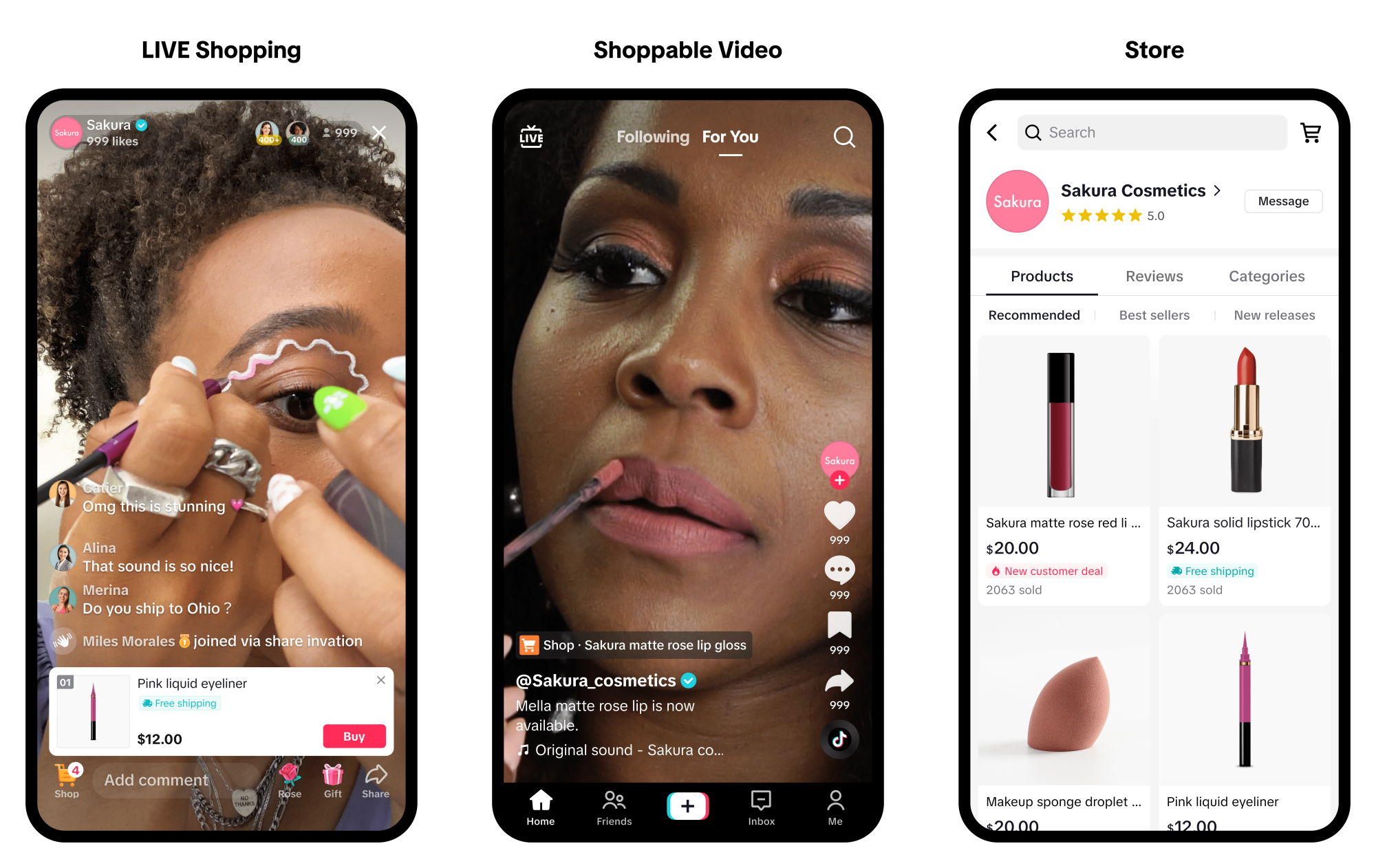
Image credit- TikTok
Read more: NYC Bans TikTok On City-Issued Devices Amid Security Concerns
In-Feed Video and LIVE Shopping
Shop tagged items directly from videos and LIVEs on the “FOR YOU” feed’s in-feed video and LIVE shopping feature.
Product Showcase
Browse product names, read reviews, and make direct purchases from the profile of a favorite brand. On their profile page, businesses can create personalized product collections.
Shop Tab
Companies list their goods on a marketplace for new products, where shoppers can quickly search and find deals. Shoppable content and product listings highlight product recommendations, and buyers may manage orders from one tab.
Affiliate Program
Through new commission-based product marketing opportunities, creators can get in touch with sellers. Creators have a new option to monetize their talent by showcasing products in quick videos and livestreams. Sellers may select the affiliate plan that’s best for their business.
Shop Ads
New TikTok Shop Ads give sellers more possibilities to advertise their TikTok Shops so that users may find them and make purchases there.
Fulfilled by TikTok
TikTok Shop stores pick, pack, and then ship sellers’ products to clients as part of their new logistics service. This allows retailers to concentrate on their own products.
Secure checkout
To ensure a quick, simple, and secure checkout procedure, TikTok collaborates with reputable third-party payment platforms to enable transactions on the TikTok Shop. All US user data that is safeguarded by TikTok is kept in the country and maintained by USDS.
The social media site can gather more user data through its Shop tab, including addresses, financial data, and purchasing preferences. However, TikTok has stressed that all data gathered from US customers is maintained in the nation and managed by USDS, a distinct institution responsible for handling user data. TikTok is already under fire for its ties with China and has drawn criticism for it.
Read more: Zeotap Data Joins TikTok to Enhance Targeting And Boost Ad Campaign
How to Sign Up for the TikTok Shop?
In the TikTok app,
- Visit your profile and using the menu, navigate to Creator tools.
- You will see the option to sign up for the TikTok shop as a seller or creator to earn brand commission
- Creators must at least have 5,000 followers and be 18 years old to be eligible for the TikTok Shop affiliate program.
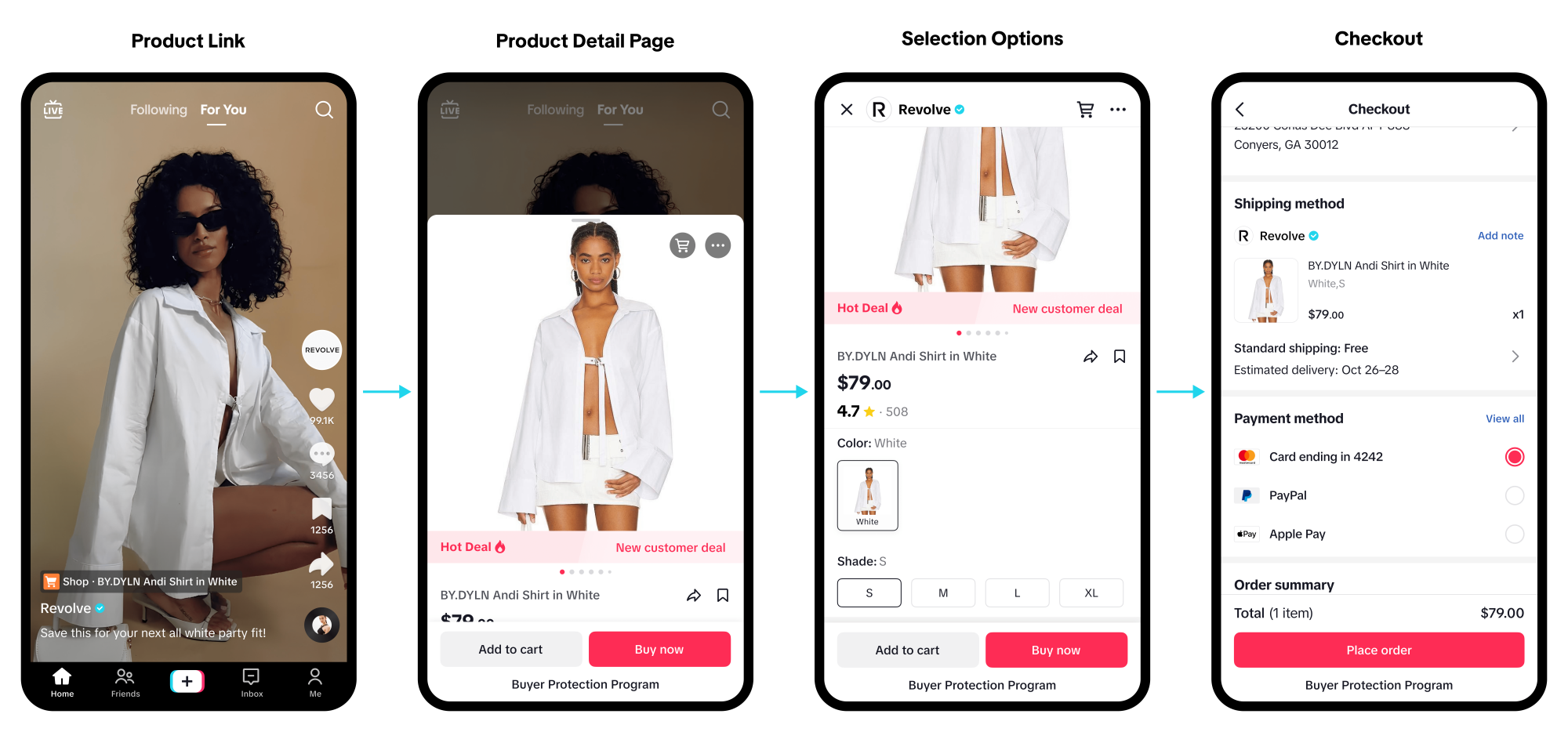
Image credit- TikTok
TikTok shop’s integration with E-commerce Apps
Several well-known e-commerce platforms, including Shopify, WooCommerce, BigCommerce, Magneto, and Salesforce Commerce Cloud, have connected with TikTok Shop. As a result, it should be simple for current online merchants to begin selling on TikTok without starting from scratch. In order to promote omnichannel businesses, TikTok has also worked with a number of multi-channel platforms, including Channel Advisor and Feedonomics. Vendors can use apps from companies like Zendesk, Printful, Yotpo, EasyShip, and others to enhance TikTok Shops’ functionality and capabilities.
Influencer marketing and social commerce in the future
Although the TikTok shop has a lot of potential, concerns around data privacy will always exist. The corporation faces a challenging task in maintaining a positive user experience while upholding privacy and security concerns, largely because of previous incidents involving user data. In order to protect users’ security and privacy, TikTok uses reputable third-party payment platforms. Integrating customer contact with e-commerce, as each interaction may result in a direct sale or an affiliate commission. Thailand, Vietnam, Malaysia, the Philippines, Singapore, and the UK are among the nations that have access to TikTok’s online marketplace.
Read More: TikTok Prioritize User Rights with Revised DSA Standards in the EU
TikTok Prioritize User Rights with Revised DSA Standards in the EU
TikTok has provided a list of the numerous measures it is taking to comply with the revised Digital Services Act (DSA) standards. The action was taken in response to the EU’s declaration that, as part of the app’s DSA compliance, European users would soon have the option to reject algorithmic personalization. User rights will be better safeguarded thanks to the EU DSA, which will soon go into effect. This is especially relevant to how personal data is used. Additionally, it will make it possible for firms to compete fairly in the digital space. Now, each platform must give users additional information about how they use their data and give them the option to opt-out if they so want.
EU Safety Hub
TikTok has introduced a fresh EU Online Safety Hub. This is in addition to turning off customization and returning users to a popular content feed (based on regional patterns). It will give a thorough rundown of all the components of TikTok’s DSA compliance along with information on each.
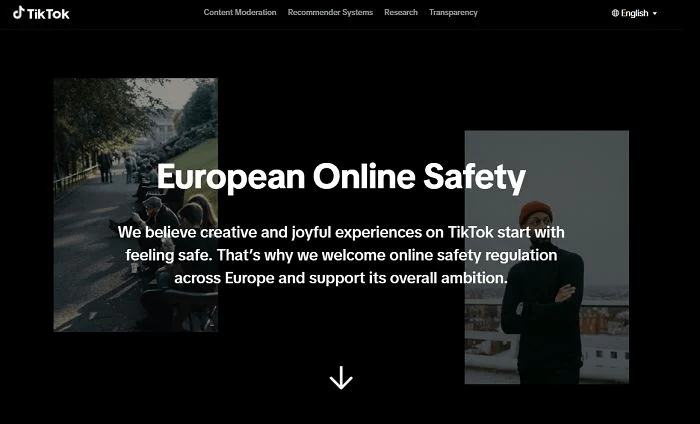
Image credit- Social Media Today
Access to all of TikTok’s reporting and transparency tools will be available through the newly launched EU Security Hub. It will contain information on its algorithms’ inner workings, how content is moderated, statistics on ad targeting, and more. The majority of the segment’s links lead back to the already-existing Help Centre pages. Moreover, it offers a useful overview of all of TikTok’s numerous measures. As a result, there are not many original insights.
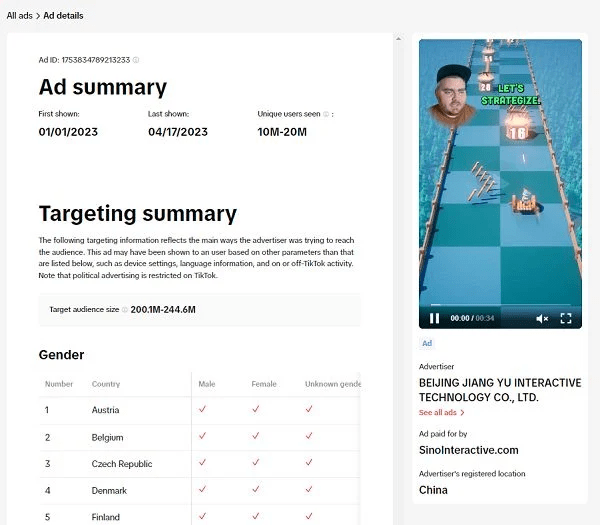
Image credit- Red Mention
Read More: Meta to Offer Ad-Free Subscription Plans For European Users
Noteworthy measures:
1. Reporting allegedly illegal content
This extra reporting tool enables users to report what the EEA considers illegal content, including advertising. The Community Guidelines and Ad Policies are the benchmark to review and examine any content reported. If found to be in violation of the policies, it will be removed globally. Furthermore, the brand-new, extra-dedicated team of moderators and legal experts will examine the content to see if it violates national laws. If it does, nations will no longer have access to the blocked content. The decision will be communicated to both the individual who uploaded the information and the person who disputed it, with the option of review should they object.
2. Recognized feed
European users can disable personalization to have the ‘For You‘ and LIVE feeds promote videos that are both regionally pertinent and widely popular rather than content tailored to their individual interests. Similar to how they would receive results from a non-personalized search, users would see information that is popular in their area and in their language of choice.
3. Commercial media library
This searchable database provides details on sponsored advertisements on TikTok and ad metadata, including the advertising creative, dates the ad appeared, and the primary targeting criteria
4. API research privileges
In an effort to increase TikTok content transparency, European academics could access applications for research on the platform from early August.
5. Commercial content labeling
It now provides a variety of labels that people and corporations can attach to their material to make it apparent to the global audience that the material is of a commercial nature. The label options include ad/sponsored (advertiser-paid content), paid partnership (a commercial partnership between an individual and a brand), or promotional content (organic content by an individual/business used to promote their own brand, product, or service).
6. Limited tailored advertisements for U18s
Personalized ads are no longer available for European users between the ages of 13 and 17.
Read More: Meta Adopts Consent Policy for Targeted Ads Data in Europe
How will the DSA revisions impact the advertiser experience?
The DSA has already significantly impacted the way services report their data usage. Therefore, it will be curious to watch if the extra notes influence how consumers let apps track and use their details if indeed it does so. Undoubtedly, more information is preferable, but alternatives like turning off the algorithm, which works similarly to turning off ad personalization, are probably more appealing in theory. Additionally, for brands, these novel measurements may provide a variety of fresh insights regarding rival strategies, ad targeting alternatives, etc. Moreover, expanded data access could aid by illuminating the methods leading companies use to engage consumers in the app.
With all of this in mind, TikTok developed novel compliance procedures that may alter the platform’s entire user experience and limit advertiser reach. They will have a safe media environment to invest in while this is happening. TikTok asserts to have 134 million users across Europe. Following the EU’s implementation of DSA, it has finally complied with the recently implemented transparency rules. Additionally, these developments are benefiting advertisers. This holds especially true since the implementation of age restrictions and content reports. More risk-averse companies are probably going to invest in the platform more broadly.
Here’s what they said
As reported by AdWeek, Costas Tsiappourdhi, social product partner at media agency Brainlabs stated,
The ability to opt out of content personalization is particularly interesting for a platform that has built its business and brand on delivering highly personalized content to its users. While this could see a change in how those users engage, I expect, in practice, that TikTokers will be reluctant to part ways with their algorithmically curated For You pages, resulting in fewer opt-outs overall.
Aengus Boyle, senior director for media at VaynerMedia London added,
With consumer trust in big platforms having been eroded over the past few years, steps like this are essential to empower and inform consumers. The new commercial content library is also an exciting prospect for those interested in seeing how other advertisers are activating on the platform, giving a view into creatives being run, flight dates, and details around targeting parameters leveraged.
Read More: NYC Bans TikTok On City-Issued Devices Amid Security Concerns
Zeotap Data Joins TikTok to Enhance Targeting And Boost Ad Campaign
Zeotap Data reveals a fresh collaboration with TikTok for Business. Zeotap Data is a deterministic people-based data set with full permission that contains more than 500 million unique IDs. On the other side, TikTok for Business is the advertising platform for the well-known platform for short-form video entertainment app TikTok. By working together strategically, advertisers will more effectively target their audiences. Additionally, it will guarantee unparalleled data while enhancing TikTok campaigns’ audience possibilities, all while ensuring the highest privacy.
Zeotap Data- Pioneer in data solutions
In Germany, Zeotap Data was developed with a significant emphasis on GDPR compliance. They have access to a plethora of 100% consented data because of the company’s exclusive partnerships with leading mobile telecom operators, premium publishers, and e-commerce platforms. They have raised the bar for data privacy and quality in the European advertising environment. To establish a 360-degree perspective of consumers, Zeotap Data takes a privacy-first strategy, using lasting identifiers like MAIDs, hashed email addresses, and universal IDs to get detailed insights into app activity, cookies, and offline properties. Their people-based data, complemented by patented deterministic algorithms and cutting-edge machine learning techniques, precisely resolves identity at a personal level, guaranteeing specific targeting and reliable demographic projections.
Advantages for Advertisers
Zeotap Data’s integration with TikTok gives advertisers the ability to comprehend the audience beyond the social profile, increase campaign efficiency, keep a handle on data and audience definition, and enhance campaign outcomes.
1. Unprecedented Audience Insight
By utilizing Zeotap Data, it may go above social profiles and obtain profound insight into the target audience. This collaboration will benefit agencies and advertisers. This degree of control over data and target definition significantly increases the value of campaigns by assuring accurate segmentation and attributes that exactly match brand objectives.
2. Rich and measured impact
Comprehensive user profiles from Zeotap Data allow agencies and advertisers to run constant quantifiable campaigns across programmatic and social channels, increasing campaign efficacy and ROI.
3. Campaign outcomes
Zeotap Data activation improves campaign results. It gives agencies and advertisers access to features beyond the social profile and increases campaign effectiveness by utilizing distinctive audience assets.
4. Consumer segregation
For programmatic and social campaigning, Zeotap Data will mimic the consumer personas of the marketers’ current customer segmentation. This will enable managed data service multi-channel activations.
Read More: Tiktok Diversifies Content with Text Posts, Sparks Rivalry with X
Here’s what they said
Matt Bennathan, SVP at Zeotap Data said,
Zeotap Data enables agencies and advertisers to develop a comprehensive 360-degree view of users. Our people-based data, supported by patented deterministic methods and advanced machine learning techniques, resolves identity at an individual level, ensuring precise targeting extended to TikTok using persistent identifiers. This partnership upholds data privacy while empowering agencies and advertisers to achieve exceptional campaign performance.
Puru Mehta, Global Product Marketing Manager for Audiences at TikTok stated,
TikTok for Business is thrilled to join forces with Zeotap Data to enhance the advertising experience on TikTok. This partnership marks a significant step in providing advertisers with a deeper understanding of their audiences, ensuring campaigns that resonate and deliver exceptional results.
About Zeotap Data
Zeotap Data, which offers quality and scale without sacrificing privacy, was developed in Germany for GDPR. With over 500 million unique IDs and over 1 billion data points refreshed every day to assure fidelity and correctness, Zeotap Data provides people-based, deterministic data. Zeotap Data uses exclusive data relationships from the telecom industry to reach target verified age and gender demographic audiences. It is completely consented to, GDPR, and ePrivacy compliant. Zeotap Data offers unrivaled client support to make sure agencies, advertisers, and platforms provide successful campaign results. Furthermore, it is presented in widely recognizable IAB 1.1 segmentation to accommodate all industries and is accessible through every important buying channel. Major media agencies and advertisers worldwide work with Zeotap Data.
About TikTok for Business
The well-known video-based entertainment platform TikTok has an advertising platform called TikTok for Business. TikTok for Business, which has a large user base and a diverse community. It enables businesses and advertisers to interact with consumers through real, innovative, and immersive campaigns that help them build strong relationships with their target audiences.
Read More: NYC Bans TikTok On City-Issued Devices Amid Security Concerns
NYC Bans TikTok On City-Issued Devices Amid Security Concerns
TikTok, a well-known application for short-form videos, has drawn attention from around the world. The most recent entity to impose app usage restrictions is New York City. It has instructed its staff to remove TikTok from phones acquired from the city. By doing this, they join the federal government and more than half of the states in prohibiting the use of the Chinese-owned social media app on government-provided electronic devices. A 30-day deadline has been set by the New York City Cyber Command, a part of the City’s Office of Technology and Innovation, for city employees to quit using TikTok. The division has found that the app puts the city’s technical networks at risk of security. In the previous year, Congress had moved to outlaw TikTok on federal devices, and several states have followed suit.
TikTok-U.S. Hot Waters
In December 2022, the US House of Representatives approved a bill that prohibited the use of TikTok on official equipment. Additionally, the Biden Administration intensified its lobbying campaigns against the app earlier this year to get TikTok to renounce its Chinese heritage and break ties with its parent business ByteDance. This has distinguished the app from other American social media behemoths. Shou Zi Chew, TikTok’s CEO, gave testimony before Congress as well. He put up with five hours of intense grilling from senators who were worried that China was using the app’s user data to jeopardize national security.
In response to worries that TikTok’s parent business, ByteDance, was sharing user data with the Chinese government and spying on Americans, the federal government ordered the staff to uninstall the app from government-issued cell phones earlier this year. Similar prohibitions were established in more than 25 states.
Read More: TikTok Market Struggles In Midst Of Trade War Between USA and China!
NYC bans Tiktok
Due to its connections to China and how it manages user data, TikTok has come under fire from American politicians. As a result of the political response, Montana passed a bill that essentially outlawed the app beginning in 2024. The Montana statute was challenged by TikTok, who claimed that it violated the First Amendment. The platform asserted that claims that the Chinese government had access to user data on TikTok were unfounded.
Since 2020, TikTok use on state-owned phones has been forbidden in New York, with a few exceptions for advertising channels. Officials from TikTok have stated that there is no basis for concern about cybersecurity risks associated with the app’s use. A few New York Public Relations platforms were nevertheless permitted under the policy to use the app for marketing. The software is now prohibited on state-owned devices in 30 states.
Three years after New York State discreetly imposed a comparable restriction on government devices in 2020, New York City has decided to limit TikTok to city-owned devices. The city cited federal laws imposed to outlaw the app, as well as U.S. Office of Management and Budget recommendations limiting its usage on government-owned devices. New York City’s actions are now consistent with those of the federal government. Although TikTok had previously outlined its plans to guarantee the security of U.S. user data, little has been done to quench the fears of the lawmakers.
Here’s what they said
Jonah Allon, a spokesperson for Mayor Eric Adams said in a statement,
While social media is great at connecting New Yorkers and the city, we have to ensure we are always securely using these platforms. NYC Cyber Command regularly explores and advances proactive measures to keep New Yorkers’ data safe.
Scott Reif, a spokesperson for the state Office of Information and Technology stated,
We seek to meet people where they are and remain vigilant in protecting critical state assets, and urge New Yorkers to use caution when using TikTok and all social media platforms to protect their privacy and security.
Three years ago, TikTok and 49 other Chinese apps were first blocked in India, one of the pioneering nations to do so. Following suit, earlier this year New Zealand and Canada implemented preventative measures to block TikTok from some government-owned devices. They explained it away to app users’ privacy and data worries. Social networking applications are feeling the heat of public outrage as privacy and user information issues persist. The user policies of apps like Zoom, Google, and others had to be updated to comply with the constantly evolving legal framework governing technology. We’ll have to wait and see what happens with TikTok in the US and the business.
Read More: TikTok Being Transparent: Revealed It’s Algorithm To The World
Lemon8, TikTok’s sister app struggles in the US, users cite inorganic feel and influencer bias
Lemon8, the sister app of TikTok by ByteDance started off positively. Thanks to TikTok’s reach and success in the international market, it became widely popular. But like every new app launched, Lemon8 too has become saturated for a very good reason. While U.S. lawmakers were debating on a ban on TikTok earlier this year, parent company ByteDance was quietly preparing the launch of its social media app Lemon8.
TikTokers were excited about the latest platform, and the app downloads skyrocketed placing the app at #2 in the App Store in the U.S. Before we dive into what issues that app is facing, here is a brief description of Lemon8 for those who have never heard of it.
Lemon8, what is it?
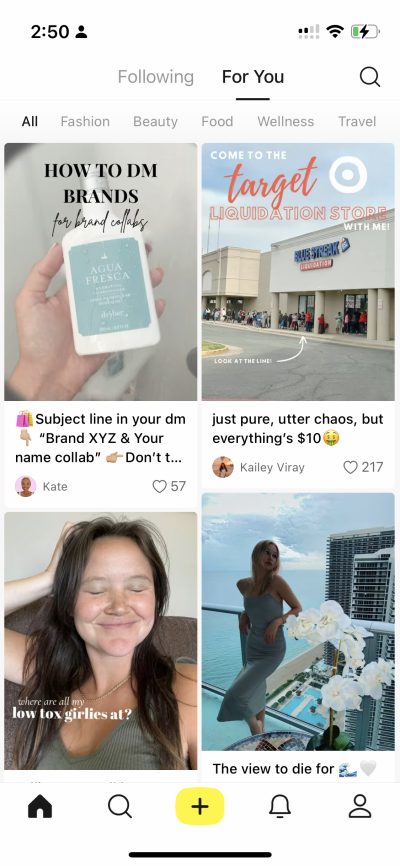
Image credit- Rest of World
Lemon8 is a social media platform, best known for fusing Instagram and Pinterest. A lifestyle-based app, it allows content creators to share photos and videos curated around a specific topic. Initially launched in Japan in 2020, it quickly gained traction before reaching its peak popularity in the western markets three years later. The app features a main side-by-side vertical feed where users can post images and videos and decorate them with in-app templates. The platform broke the barriers between audiences and influencers with its feature that allowed creators to tag their posts with product details, links, and price breakdowns.
Specifically designed with the younger Gen Z audience in mind, the app is more about aesthetics and DIY tips, unlike other social media spaces. Food, wellness, fashion, beauty, home, travel, and productivity are the seven content categories. Under each topic, one can find recommendations, video tutorials, and perfectly crafted content that appeals to the eye.
But as the initial hype died down, like any other newly launched application, users faced problems with the app. Lemon8’s popularity tanked and since then, its DAUs have nearly halved from 11,930 to 6,360.
Users say Lemon8’s algorithm lacks the magic of its sister app TikTok: “I mostly get bible content from religious people and weight loss tips, and I’m not interested in either of those”https://t.co/GlSBCKlS1k
— Rest of World (@restofworld) July 19, 2023
Aesthetically curated or just a gimmick?
Lemon8, launched as a follow-up app for TikTok, flopped in the U.S. Users complain that the app is too pretty and well-curated to the point of feeling fake. Here are some problems users feel need to be addressed
- The app feels inorganic and well-manicured
- It focuses more on influencers’ needs rather than ordinary users
- Feed crafted to blandness
- Feels like an app created for creators, by creators
- Ordinary users feel left out
- Algorithm lacks gauging user preferences and keeps showing recommendations that users were not interested in.
- App does not support sharing external links, making it difficult to build a brand on social media.
- Everything was well presented and well-crafted when users refreshed their feed
- Users complained of declining engagement
The app sets unrealistic standards and idealizes lifestyles. One user commented that the app reminded her of Pinterest in its early days when it was just “white girls” who posted about their lifestyles. The app is filled with topics like “The time I realized skinny privilege is real”, “Hot Girl Lunch Ideas” and more.
Another user pointed out that niche topics like dark academia, or cottagecore did not gain as much traction as conventional topics did. The user also mentioned that the app did not feel ready to have a real-world conversation. Lemon8 is also recruiting lifestyle influencers to collaborate with them on a paid partnership. In return, the creators are promised exposure and guidance. One of the ads posted by the platform stated that they were looking for “U.S. based women aged 18-25, and had an ‘It Girl’ aesthetic with a background in creating ‘high quality’ beauty and fashion content.
A Chinese app rip off?
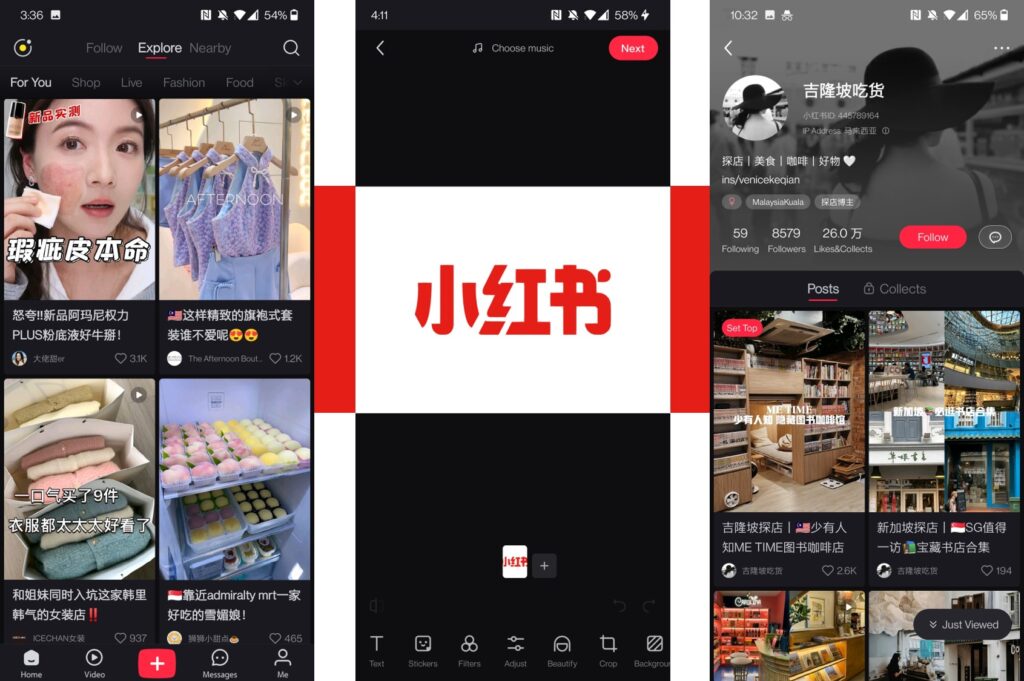
Image Credit- First Com Academy
Lemon8 is a replica of the Chinese social media giant and e-commerce platform called “XiaoHongShu” which literally translates to a “Little Red Book.” It has been deemed the “lifestyle bible” and hosts more than 200 million monthly active users. In simple terms, it can be described as China’s own Instagram. The platform targets women in their 20s and 30s from first and second-tier Chinese cities. Thus, women belong to affluent families with higher spending capacity. The female-to-male ratio on the app is 8:1 (88.8% of females and 11.1% of males).
Users share their lifestyles, shopping experiences, and other content in the form of photos, videos, texts, and live streams. Content can range from beauty and cosmetics to food, fashion, travel, fitness, entertainment, etc. Social features allow users to discover the latest brands. It is immensely popular among beauty and fashion brands like Chanel and Dior.
ByteDance saw the absence of such a platform on the global market as an opportunity to replicate XiaoHongShu’s domestic success. Therefore, they launched an “overseas Little Red Book” Lemon8 in the hopes of capitalizing on TikTok’s reach and success.
Our thoughts
In their optimism about imitating a widely successful app, ByteDance, and Lemon8 failed to consider the drawbacks. XiaoHongShu users also complained that the app set unrealistic standards for women’s beauty and wellness. Over in the US, its adversary faces similar problems. When one opens Lemon8, the very first thing that runs through the mind is that it is filled with clickbait-ish content, including how to lose weight in 40 days, apps to get free products from any brand, etc.
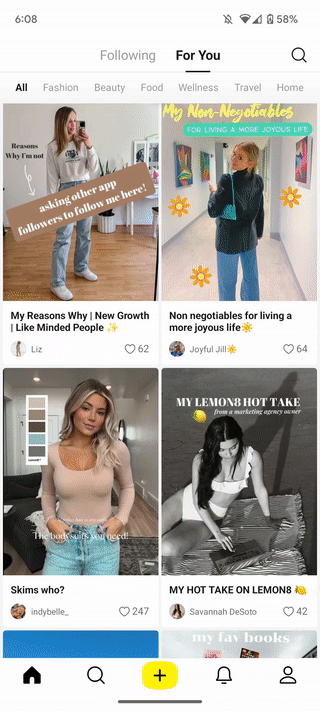
Video credit- DreamlikeDiana
In addition, the app was full of white women between the ages of 20 and 30. They promoted beauty, Christianity-related posts, and high fashion, which not many users can relate to. This in many ways contrasts with the ongoing body positivity initiative that encourages women to feel comfortable in their own skin. As there are no brands allowed on Lemon8, it is impossible to convince people to make a purchase. Despite losing active users, ByteDance is still promoting the app to increase outreach, and posting upcoming job listings as well.
Lastly, the app lacks inclusivity. Lemon8 is women-dominated with next to zero male audience. It is highly likely that Lemon8, which is also owned by a Chinese company, will be banned like TikTok.
All in all, like every new app, Lemon8 too has had its fair share of fame, is becoming less and less relevant to its audience. It has come to this point also because the platform has not taken any plausible action to convert targets into users. The app feels like a space with pretty content, but not relatable. Users have mentioned giving it a try again, if and only if the platform brings changes to make it more than what it already is.
What do you think is the future of this obsolete social media app?
Read More: TikTok Gets More Visual, Launches ‘Interactive Add Ons’ For In-Feed Ads
Tiktok Diversifies Content with Text Posts, Sparks Rivalry with X
TikTok becomes the latest company to exploit the audience shift from Twitter, or now, X with the launch of its latest text posts feature. The Chinese-owned corporation, best known for its video content, has now added written content. TikTok users can freely express themselves with this tool. This action is supported by TikTok’s dedication to creativity and individuality.
The introduction of short form material is the newest tool in TikTok’s arsenal for producing content. Content creators now have an additional tool for connecting with their audiences. The text post format will allow them to express their ideas through posts, poetry, and other written material.
You can now share text posts on TikTok ✍️ Text posts open exciting possibilities for creators to share their stories, poems, lyrics, and more – giving you another way to express yourself and making it even easier to create! Learn more ⬇️ https://t.co/XX18GERQRE
— TikTokComms (@TikTokComms) July 24, 2023
Why Written Form Content?
With TikTok’s updated functionality, businesses can publish text posts to their followers to broaden their reach and boost engagement. Users on the platform are video-responsive. Some people, however, might find text posts a better way to connect with brands. Marketers can now reach audiences they previously had no access to thanks to this extra source. Larger audiences result in more exposure, participation, and return on investment.
What to Expect from this feature?
TikTok has introduced various features to make text posts more interesting and appealing. They include:
- A wide range of STICKERS creators can use to boost their written form posts
- TAGS and HASHTAGS can be used with text posts, just like video and photo posts.
- Content creators can choose from a variety of colorful BACKGROUNDS to make their posts more appealing.
- The creator can store their posts in draft if they do not wish to publish them and also discard them later.
- The limit for posts is 1000 words.
How To Create Text Posts on TikTok?
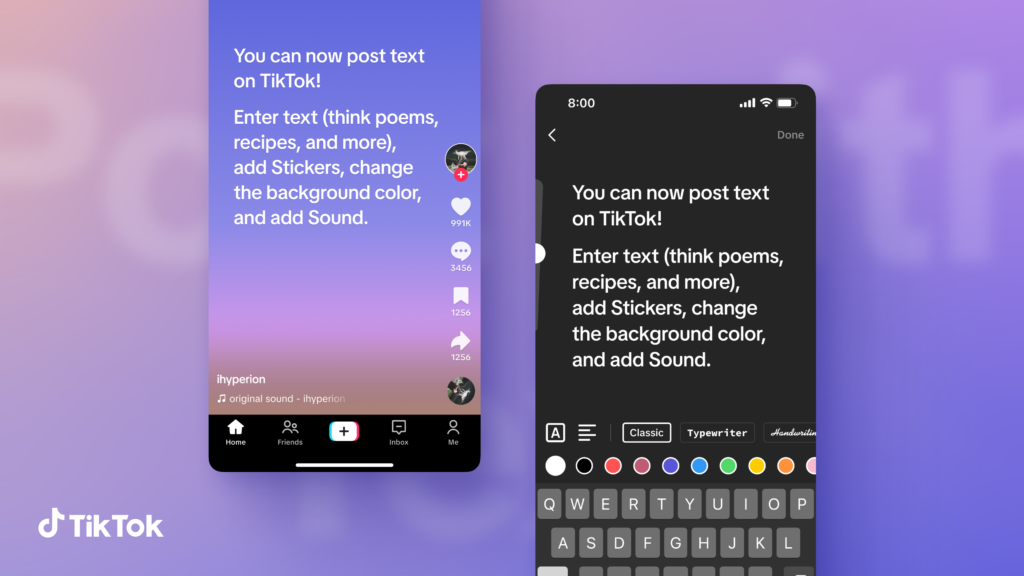
Image Credit: TikTok
TikTok has simplified the text creation process, making it easier for users to share content.
- To post a text message, a user must navigate to the camera page and select the text option.
- After choosing, the user is taken to the creation page, where they can input their material.
- They can also add songs, location tags, activate comments, and use the Duet function to personalize their content.
This inclusion of text posts demonstrates TikTok’s dedication to supporting community creativity. The addition of this function might change the platform’s fundamentals from long-form video content to short-form light text content. The range of content marketing strategies might then be explored by organizations.
TikTok has now joined the cat race with X and Threads to control the text-based market. However, X, formerly known as Twitter, is in financial turmoil due to a 50% decline in ad sales. At the same time, Thread’s popularity is steadily eroding as DAUs gradually shrink. ByteDance, the firm that owns TikTok, also made strides in generative AI with the recent launch of the CapCut plugin for ChatGPT for AI-created videos.
The stage has been set for a revolutionary shift in the social media sector with TikTok’s entry into the text-based market. As these competitors square off, social media enthusiasts anticipate a fascinating showdown in innovation and engagement.
Read More: The New World Of TikTok Marketing, Everything You Need To Know!

